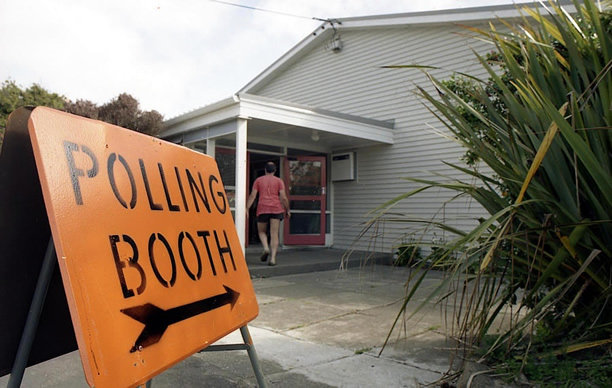
In the first general election held under the new mixed-member proportional representation (MMP) voting system, New Zealand voters selected 120 members of Parliament through a mixture of electorate contests (returning 65 members) and party lists (55 members). The MMP system, which replaced New Zealand’s traditional first-past-the-post voting method, had been proposed by a Royal Commission on the Electoral System that reported in 1986. It was adopted following an indicative two-part referendum in 1992 and a binding referendum, held alongside the 1993 election, in which MMP received the support of 54% of voters.
The election night result was inconclusive, with no party holding an overall majority. The governing National Party won 34% of the party vote and 44 seats, followed by Labour (28%, 37), New Zealand First (13%, 17), the Alliance (10%, 13) and ACT (6%, 8). No other parties crossed the 5% threshold required to enter Parliament via the party list, but the United Party won a single electorate seat. Although MMP did not trigger any significant realignment of the traditional two-party system, the new Parliament was more diverse and more representative than ever before, vindicating some of the claims of the Royal Commission and pro-MMP campaigners. Sixteen Māori MPs and three MPs from Pacific communities were elected, together with New Zealand’s first Asian MP and first openly homosexual MP. The number of women members increased from 21 in 1993 (22% of MPs) to 35 (29%).
The ultimate outcome of the election was the formation of New Zealand's first coalition government since the early 1930s. When a coalition agreement between National and NZ First was announced after two tense months of negotiations, it came as a surprise to many, as the latter party’s leader, Winston Peters, had repeatedly attacked National and its leader, Jim Bolger, during the election campaign. The coalition collapsed less than two years later, triggering a split in NZ First’s ranks and a spate of ‘party-hopping’. By 1999 the six-party Parliament elected in 1996 had fractured into 10 parties plus three independent MPs, undermining public confidence in the new voting system.
How to cite this page
'New Zealanders go to the polls in first MMP election', URL: https://nzhistory.govt.nz/page/new-zealanders-go-polls-first-mmp-election, (Ministry for Culture and Heritage), updated 9-Jun-2021

Community contributions